Bird feeding brings joy to millions of nature enthusiasts across the world, offering front-row seats to the vibrant world of avian visitors. However, this peaceful pastime often comes with an uninvited guest – the acrobatic and persistent squirrel. These clever rodents can quickly transform a bird sanctuary into their personal buffet, leaving frustrated bird lovers and hungry birds in their wake. While squirrels are fascinating creatures deserving of respect in our ecosystems, their domination of bird feeders creates a genuine challenge. This article explores five humane, effective strategies to protect your feathered friends without causing harm to these bushy-tailed visitors. By implementing these approaches, you can create a balanced backyard environment where birds can feed without competition and squirrels can find appropriate alternatives.
Understanding Squirrel Behavior: Why They Target Bird Feeders

Squirrels are opportunistic foragers with remarkable problem-solving abilities, making bird feeders irresistible targets for these resourceful animals. Their natural diet consists of nuts, seeds, fruits, and fungi – precisely the high-calorie foods typically found in bird feeders. A single bird feeder can provide more nutrition in one location than a squirrel might find through hours of foraging, creating an efficient feeding strategy for these energy-conscious creatures. Additionally, squirrels have evolved as exceptional climbers and jumpers, with some species capable of leaping horizontal distances of up to 10 feet and falling from heights of 20 feet without injury. Their persistence is not mere stubbornness but rather an evolutionary adaptation – squirrels that efficiently secure food sources have better survival rates, especially during scarce winter months when natural food is limited.
Trick #1: Strategic Feeder Placement
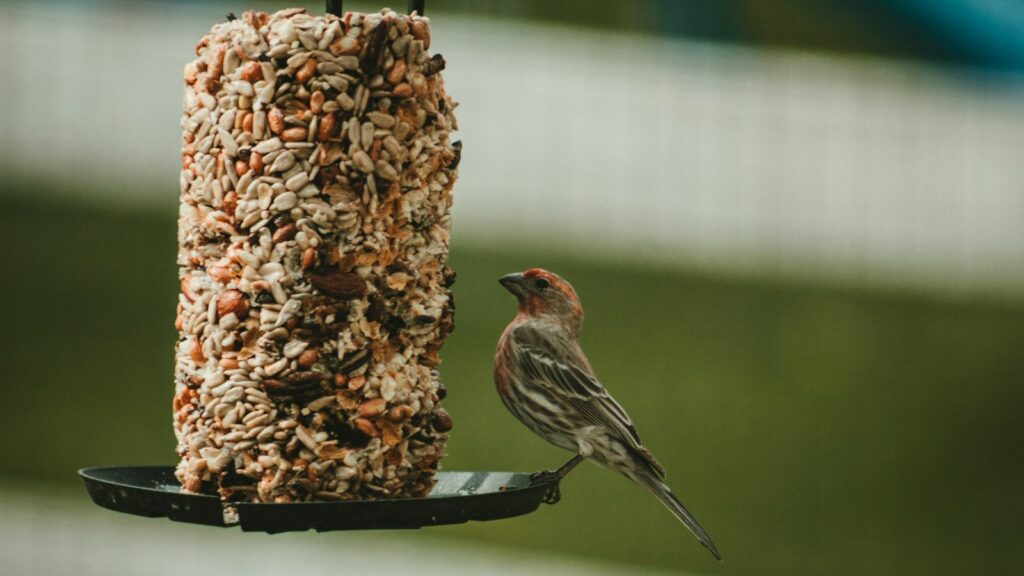
Thoughtful positioning of your bird feeders provides the first line of defense against squirrel raids without requiring specialized equipment. Place feeders at least 10-12 feet away from any jumping platforms such as trees, roofs, or tall structures, exceeding the maximum jumping distance of even the most athletic squirrels. Mount feeders on smooth metal poles at least 6 feet tall and 8 feet from any structure to create an insurmountable challenge for climbing squirrels. Consider hanging feeders from thin wire between two distant points, as the unstable nature of this setup makes it particularly difficult for squirrels to maintain balance while feeding. For gardens with limited space, position feeders in open areas where squirrels feel vulnerable to predators, making them less likely to spend extended periods exposed while raiding. Remember that strategic placement not only discourages squirrels but can also provide better viewing opportunities for bird watching.
Trick #2: Baffle Systems That Actually Work

Baffles represent one of the most effective physical barriers against determined squirrels when properly installed and sized. Dome-shaped baffles installed above hanging feeders prevent squirrels from climbing down, while cone-shaped baffles mounted below pole-mounted feeders prevent upward climbing access. For maximum effectiveness, install pole baffles at least 4-5 feet above ground level and ensure they have a diameter of at least 15-18 inches to prevent squirrels from stretching around them. Choose baffles made from smooth, chew-resistant materials like metal or hard plastic that offer no grip or tooth-hold for persistent squirrels. Some advanced baffle systems incorporate weather protection features that simultaneously shield bird seed from rain while blocking squirrel access, providing dual benefits for your feeding station. Remember that even the best baffle requires proper installation – a wobbly or improperly positioned baffle creates exploitable weaknesses that clever squirrels will quickly discover.
Trick #3: Weight-Activated Feeder Solutions
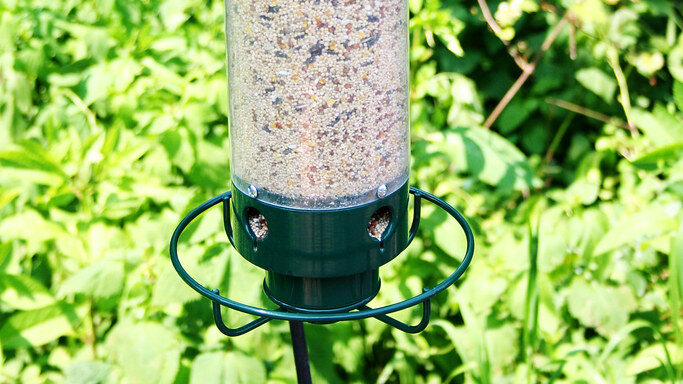
Weight-activated feeders represent technological innovation in squirrel deterrence, utilizing the significant weight difference between birds and squirrels. These ingenious feeders feature mechanisms that close access to feeding ports when triggered by anything heavier than a bird, typically around 2-4 ounces depending on the target bird species. When a squirrel attempts to feed, its weight automatically closes the seed ports or drops a protective cage over the feeding area, creating a frustration-free experience for birds while teaching squirrels to look elsewhere. Modern weight-activated feeders come in various designs including hoppers, tubes, and platforms that accommodate different bird feeding preferences. These feeders require no monitoring or intervention once installed, working continuously to sort feathered friends from furry raiders through simple physics rather than harmful deterrents. Quality weight-activated feeders represent a higher initial investment but often pay for themselves through reduced seed consumption and decreased feeder damage from chewing and climbing.
Trick #4: Squirrel-Proof Feeder Designs

Beyond weight-activated options, several feeder designs incorporate squirrel-resistant features through clever structural elements. Cage-surrounded feeders enclose traditional seed dispensers within wire caging with openings sized specifically to allow smaller birds access while physically excluding larger squirrels. Some innovative designs incorporate spinning or tilting mechanisms that use a squirrel’s weight against them, causing the feeding perch to rotate or tip when heavier animals attempt to land, sending them sliding off without access to seed. Metal reinforcement at key chewing points prevents squirrels from simply creating their own access points, with some manufacturers using steel-reinforced feeding ports and perches in vulnerable areas. Advanced models combine multiple deterrent approaches, such as slippery surfaces with no-grip coatings alongside physical barriers, creating a comprehensive defense system against even the most determined raiders. When selecting a squirrel-proof feeder, consider the specific bird species you wish to attract, as some designs may inadvertently exclude larger desirable birds alongside squirrels.
Trick #5: Distraction Feeding Strategies
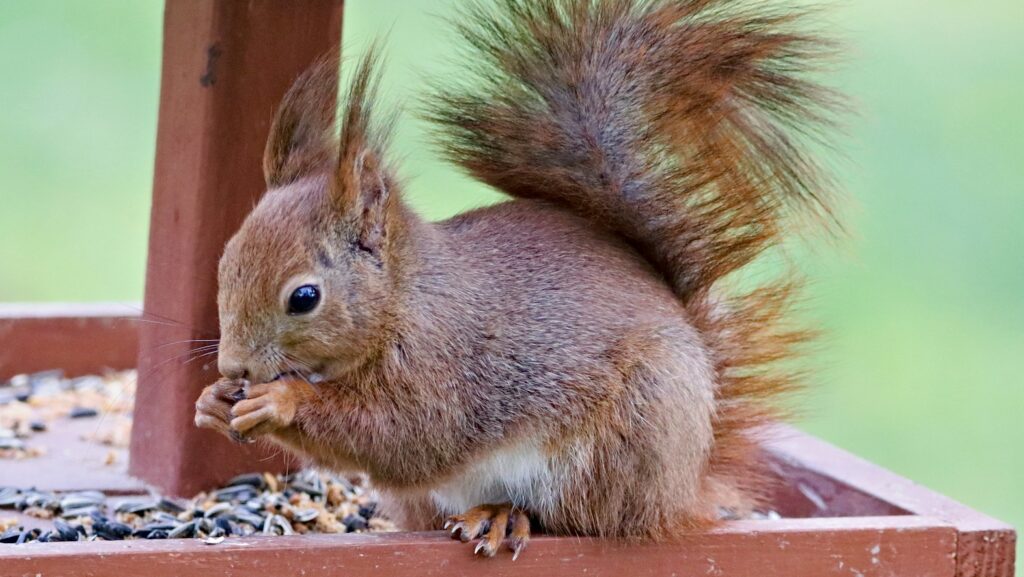
Rather than focusing solely on exclusion, distraction feeding acknowledges squirrels as part of your backyard ecosystem by providing alternative food sources positioned strategically away from bird feeding areas. Create dedicated squirrel feeding stations with their preferred foods like corn, peanuts, and sunflower seeds, placed in ground-level feeders that cater to squirrels’ natural foraging preferences. Position these distraction feeders at the perimeter of your yard, ideally near natural cover where squirrels feel secure, drawing them away from bird feeding zones. Some gardeners find success with specialized squirrel feeders that provide entertainment value, such as spin-feeders requiring dexterity or puzzle feeders that make squirrels work for treats, occupying their time and energy away from bird stations. Importantly, maintain consistent filling of these distraction feeders, as intermittent availability may simply train squirrels to check all food sources including your bird feeders. This coexistence approach often proves more successful than pure exclusion tactics, particularly in areas with high squirrel populations.
Seed Selection: Bird Foods That Squirrels Avoid

Strategic seed selection offers a subtle yet effective approach to discourage squirrel raiding while still attracting a variety of birds. Nyjer (thistle) seed holds minimal appeal for squirrels yet attracts desirable birds like finches, redpolls, and siskins, making it an excellent primary offering in squirrel-prone areas. Safflower seed presents another squirrel-resistant option, with its slightly bitter taste deterring most squirrels while remaining attractive to cardinals, chickadees, titmice, and grosbeaks. White proso millet appeals to ground-feeding birds including juncos and sparrows but holds little interest for tree squirrels, creating natural separation in feeding preferences. Specialized hot pepper-infused bird seeds leverage the fact that birds lack receptors for capsaicin while mammals find it irritating, creating a naturally selective feeding system without harming either species. By switching from traditional black oil sunflower seeds and peanuts (squirrel favorites) to these alternatives, you can naturally reduce squirrel interest in your feeders without complex barriers or devices.
Landscape Modifications That Discourage Squirrels
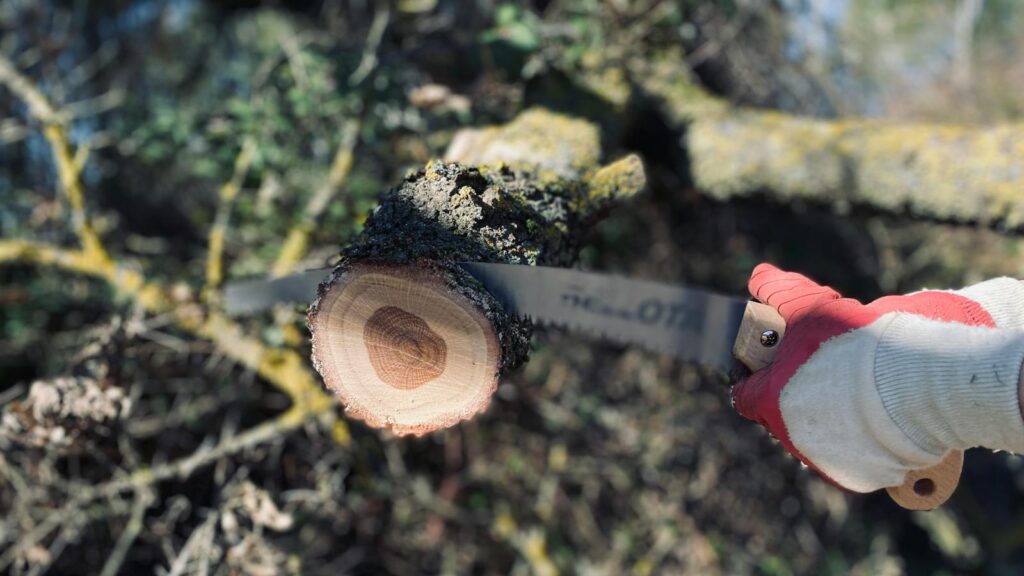
Thoughtful landscape planning creates natural barriers and limitations that influence squirrel behavior around feeding areas. Strategic pruning of tree branches eliminates natural “highways” and jumping platforms, creating isolation zones around feeders that exceed squirrels’ impressive jumping abilities. Consider incorporating squirrel-deterrent plants with textures or scents that these animals typically avoid, such as daffodils, alliums, and strongly scented herbs like mint and garlic, creating natural boundaries around bird feeding stations. Some gardeners successfully deploy selective placement of dense shrubs that appeal to birds seeking cover but create visibility concerns for predator-conscious squirrels in open feeding areas. Creating dedicated wildlife corridors away from feeding stations channels squirrel movement patterns naturally toward more appropriate areas of your landscape, using their own instinctive behavior patterns as a management tool. Remember that landscape modifications provide long-term, sustainable solutions that work without constant monitoring or intervention once established.
Natural Deterrents: Scents and Sensations

Squirrels rely heavily on their acute sense of smell for both finding food and detecting danger, making scent-based deterrents surprisingly effective in many situations. Capsaicin-based products, derived from hot peppers, can be applied to poles, feeding areas, and even mixed with bird seed without affecting birds, who lack receptors for this compound. Predator urine products (commercially available synthetic versions) trigger squirrels’ innate fear responses when applied around feeding stations, creating invisible boundaries that most squirrels will instinctively avoid. Some gardeners report success with peppermint oil, citrus oil, or vinegar solutions sprayed around feeding stations, as these strong scents mask food odors and create uncomfortable sensory experiences for investigating squirrels. Sound-based deterrents that activate with motion can provide temporary disruption of squirrel activity without disturbing birds, though effectiveness may diminish as squirrels acclimate to predictable sounds. While natural deterrents typically require regular reapplication, especially after rain, they offer chemical-free solutions that integrate well with other prevention methods.
Timing Strategies: When to Fill Feeders
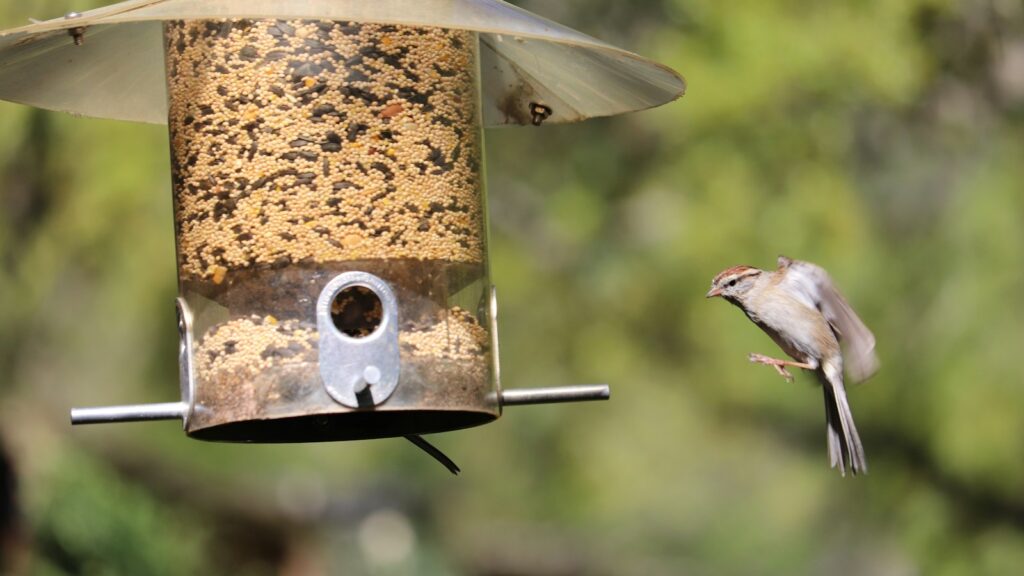
Strategic timing of feeding routines exploits the different activity patterns of birds and squirrels to create natural separation. Many bird species feed actively during early morning hours shortly after sunrise and again before sunset, while squirrels typically become active mid-morning after temperatures rise. By filling feeders very early in the morning and removing or emptying them by mid-morning, you create a feeding window that naturally favors birds over squirrels. Some dedicated bird enthusiasts employ timed feeders that automatically open and close at pre-programmed intervals aligned with peak bird feeding times, eliminating the need for daily manual adjustments. During winter months, squirrels remain inactive during extremely cold periods, creating additional opportunities for bird-exclusive feeding during temperature drops. Complementing this approach with observation to identify specific timing patterns in your local wildlife can help refine your schedule for maximum effectiveness. Remember that consistency matters – irregular feeding schedules confuse birds and may actually encourage squirrels to check feeders more frequently throughout the day.
DIY Solutions on a Budget

Creating effective squirrel deterrents doesn’t require expensive specialized equipment, as several household items can be repurposed into functional solutions. Homemade baffles constructed from repurposed materials like plastic salad bowls, large funnels, or metal pie plates can be attached to poles or hanging wires to prevent climbing access. Plastic slinky toys stretched along feeder poles create unstable climbing surfaces that collapse under a squirrel’s weight while allowing birds to fly directly to feeding ports. Smooth PVC pipe sections can be used to create wider diameter sleeves around thinner mounting poles, preventing squirrels from gaining the grip needed to climb vertically. Recycled plastic bottles can be transformed into spinning barriers when properly mounted, creating obstacles that rotate under a squirrel’s weight but don’t affect flying birds. When implementing DIY solutions, focus on durability and weather resistance, as temporary or fragile barriers may quickly fail under the persistent testing of determined squirrels.
Common Mistakes to Avoid
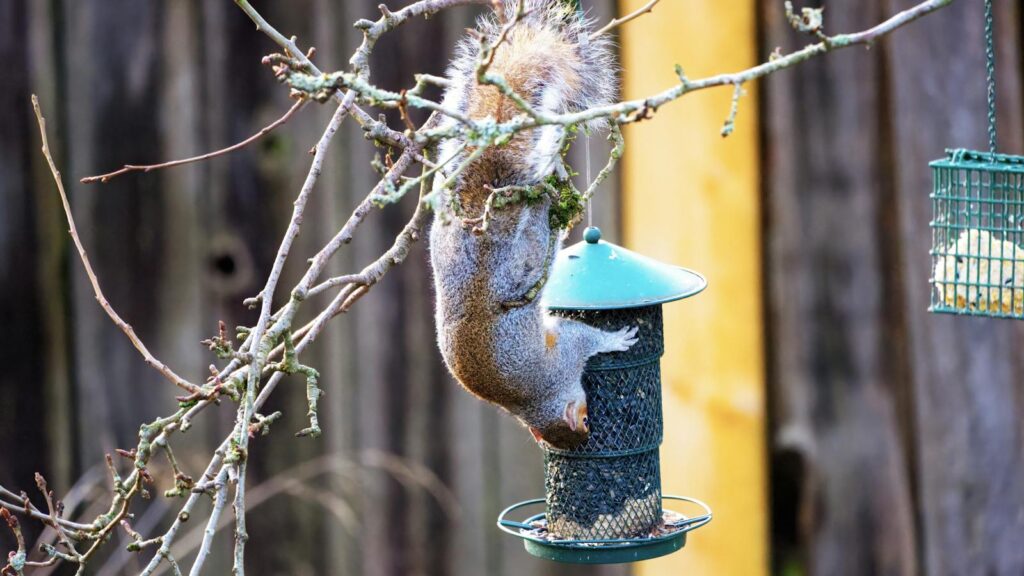
Even well-intentioned bird enthusiasts often undermine their squirrel management efforts through several common errors that create exploitable opportunities. Positioning feeders too close to structures underestimates squirrels’ impressive jumping abilities, with many homeowners failing to account for the full 10-foot horizontal leap these animals can achieve. Installing baffles at incorrect heights represents another frequent mistake, as baffles placed too low on poles (under 4 feet) can be overcome by squirrels jumping past them directly from the ground. Many bird lovers inadvertently create unintentional “squirrel highways” by overlooking nearby branches, wires, or structures that provide aerial access routes to otherwise protected feeders. Inconsistent application of deterrents, such as allowing squirrel-deterring mechanisms to fall into disrepair or failing to reapply scent barriers after rain, teaches persistent squirrels that patience eventually yields rewards. Perhaps most counterproductive is the common practice of mixing deterrent and attraction strategies, such as using squirrel-resistant feeders while simultaneously offering high-value squirrel foods like peanuts in the same vicinity.
When to Seek Professional Help

While most squirrel challenges can be managed through homeowner interventions, certain situations warrant professional consultation. Persistent property damage beyond feeder raiding, such as squirrels chewing through siding, damaging electrical wiring, or creating nest entrances in attics, indicates a problem requiring wildlife management expertise. Unusually aggressive squirrel behavior, particularly during spring nesting season when mothers defend perceived territories, may necessitate professional assessment of potential removal options. Suspected disease presence in local squirrel populations, indicated by unusual behavior, hair loss, or visible lesions, should prompt immediate consultation with wildlife authorities to protect both wild and domestic animals. Professional wildlife specialists can provide customized solutions for properties with unique challenges, such as historic homes where modification options are limited or locations with protected squirrel species subject to legal handling restrictions. Remember that wildlife professionals emphasize humane, ecological approaches focused on exclusion rather than extermination, aligning with the ethical principles that most bird enthusiasts value.
Creating Balanced Backyard Habitats

The most sustainable approach to squirrel management embraces a broader ecological perspective that accommodates the needs of diverse wildlife while protecting specific feeding zones. Consider implementing habitat zoning that designates specific areas for different wildlife activities – protected zones for bird feeding, transition areas with mixed resources, and squirrel-friendly sectors with appropriate food and shelter options. Native plant integration provides natural food sources distributed throughout your property, reducing competition pressure at concentrated feeding stations while supporting biodiversity beyond bird populations. Many successful backyard habitats incorporate diverse feeding stations at different heights and locations to accommodate the varied preferences of different bird species while naturally separating ground-feeding birds from tree squirrels. Water features positioned away from feeding stations create alternative attraction points that disperse wildlife activity throughout your property rather than concentrating competition in single locations. This balanced approach recognizes that the ultimate goal isn’t eliminating squirrels but rather creating harmonious spaces where all backyard wildlife can thrive in appropriate ways.
Conclusion

Creating a bird-friendly environment doesn’t have to mean declaring war on squirrels. Through strategic placement, specialized equipment, and thoughtful habitat design, you can successfully protect your feathered visitors while respecting the natural behaviors of squirrels. The five key approaches – strategic placement, effective baffles, weight-activated solutions, specialized feeder designs, and distraction feeding – provide a comprehensive toolkit that can be adapted to any situation. Remember that persistence and combination strategies typically yield the best results, as these intelligent rodents continually test and adapt to single barriers. By embracing these humane techniques, you create a more balanced ecosystem where birds can feed undisturbed and squirrels can find appropriate alternatives – transforming backyard wildlife watching from a source of frustration to a rewarding display of successful coexistence.
